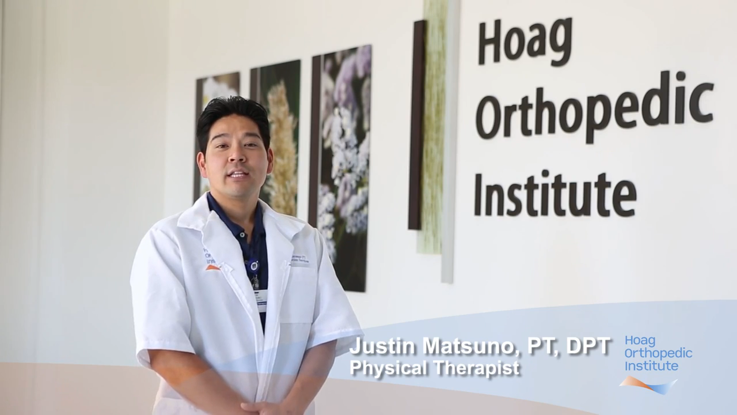Spinal Deformity
Treating Abnormalities of the Spine
Spinal deformities refer to unnatural curvatures of the spine resulting from damage to the spinal column, such as damage caused by fractures or ankylosing spondylitis (Bechterew’s disease), or various defects and congenital conditions that cause the spine to grow unevenly.
Common conditions or defects that result in spinal deformity include:
- Scoliosis – Characterized by a side to side curvature of the spine, scoliosis may not have noticeable symptoms until it progresses. While bracing may be effective, surgery is often used to correct severe curvature, especially when it impacts a person’s mobility.
- Kyphosis – The term kyphosis is used to describe excess forward curvature in the upper back (thoracic spine), although it can also sometimes affect the neck (cervical spine) or lower back (lumbar). Kyphosis can create an appearance that a person is hunched forward, and in severe cases can lead to fatigue, back pain, breathing difficulties, and difficulty with standing upright. Depending on the nature of the condition and its severity, kyphosis can be treated with non-surgical methods, including physical therapy, or surgery to re-align the spine and prevent deformity from progressing.
- Spondylolisthesis – Spondylolisthesis is a disorder involving a vertebra that slips over the bone below it. It can cause spinal deformity and back or sciatica nerve pain and weakness that limits a person’s activity level, including walking. Surgery may be used to treat severe grades of slippage or patients who do not find pain relief or improved motion through non-surgical treatment.
Treating Spinal Deformity
Treating a spinal deformity will always depend on the underlying problem unique to the patient being treated, which is why our specialists closely evaluate patients and utilize advanced diagnostic tools to address the root of their symptoms. In many cases, patients may not experience pain as a result of the deformity, but may experience a severe restriction in movement, activity level and weakness. In other cases, the underlying condition that causes deformity may also cause severe and chronic pain.
When an underlying condition does not respond to non-surgical treatment methods, including pain management, physical therapy, and exercise, spine surgery may be recommended. Although cases vary, surgery focuses largely on restoring the spine to its normal position, preventing progression of deformity, alleviating pain, and improving motion. Spinal fusion is a common surgical procedure used to treat conditions and problems that lead to spinal deformity.
Get Started by Finding an Orange County Spine Doctor
From patient evaluations and diagnostic testing to conservative treatment and surgical procedures, the Center for Spine at Hoag Orthopedic Institute is able to leverage the experience of our spine doctors, nurses, and experts to offer the comprehensive care patients need to improve their quality of life and navigate their recoveries.
If you wish to learn more about treating spinal deformity, browse our physician directory to find a spine surgeon.
-
 Back to Driving Spine & Neck
Back to Driving Spine & Neck"Procedure: Complex Spinal Surgery Watching TV, taking long walks, getting up out of a ..."
Read More -
 Back to Enjoying Life After Spine Surgery Spine & Neck
Back to Enjoying Life After Spine Surgery Spine & Neck"Procedure: Spinal fusion Jonathan Dibiasi and his family love spending time at their ..."
Read More -
 Back to Running After Spine Surgery Spine & Neck, Sports Medicine
Back to Running After Spine Surgery Spine & Neck, Sports Medicine"“I can’t believe I’m walking, let alone running,” says car crash survivor, seven-time ..."
Read More -
 Back to Savoring Every Day Hand & Wrist, Spine & Neck
Back to Savoring Every Day Hand & Wrist, Spine & Neck"Procedures: Spinal Surgery: January 16, 2017; Right Wrist Fusion: January 12, 2018 ..."
Read More -
 Back to Painting Spine & Neck
Back to Painting Spine & Neck"Procedure : Multi-level Spinal Fusion At age 69, lifelong professional artist ..."
Read More -
 Back to Wearing Cowboy Boots Spine & Neck
Back to Wearing Cowboy Boots Spine & Neck"For two years, Sally Greer spent most of her time on her couch, and gained 130 pounds ..."
Read More -
 Back to Being Healthy Spine & Neck
Back to Being Healthy Spine & Neck"I would like to get a message to a couple of your staff members and their supervisor. ..."
Read More -
 Back to Dance After Spine Surgery Spine & Neck
Back to Dance After Spine Surgery Spine & Neck"For the past decade, Irvine aerospace engineer Shoja’s zest for life led him to grace ..."
Read More -
 Back to a Better Life Spine & Neck
Back to a Better Life Spine & Neck"I had spine surgery by Dr. Richard Lee on January 3rd. It appears to have been been ..."
Read More










